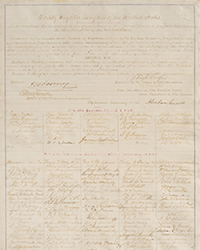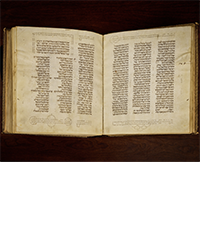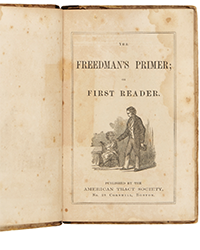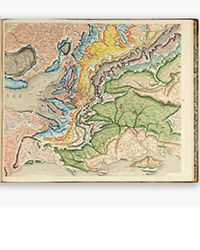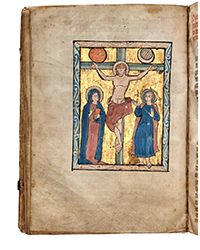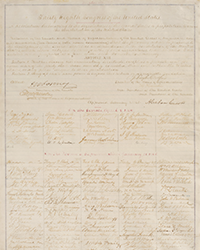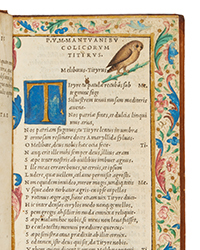Jonathan A. Hill Bookseller has issued Catalogue 249 Korean Books & Manuscripts. Hill says that because of time and the Korean War, “...printed Korean books and manuscripts have become very rare on the Western market. We believe this is one of the first, if not the first, Western bookseller catalogue devoted solely to Korean materials.” America certainly has its history with Korea, but that was in the twentieth century. This material is older, much going back several centuries. The West had few connections with Korea in those days. The result is these books were untouched by Western influences. Topics aren't all that much different from ones encountered in the West, except there is much in the way of Confucian values. These are a few selections from the books, mostly written in Korean letters.
High up in those Korean values is family. King Yongjo wrote a tract on this subject in 1773, Oje kwonse wi hyoje mun (royally commissioned essay encouraging the world to practice filial piety & fraternal duty). The importance of family is particularly highlighted as he places that value first. He writes (translated), “Among the five cardinal relationships, filial piety is foremost, with fraternal duty coming second. You show filial piety toward your family, then loyalty toward your lord. You show fraternal duty toward your older brother, then you show respect for your elders. To not act filially toward one's family but be loyal to one's lord is something I have never heard of. To not act dutifully toward one's elder brother but then be respectful toward one's elders is something I have never heard of... Indeed! Filial piety is the origin of the hundred forms of conduct.” Item 50. Priced at $4,000.
In 1592, Japan attacked Korea. It's troops occupied Pusan and the southern part of Korea during what is known as the Imjin War. After gaining ground in the south, the Japanese were halted The sides maintained their positions until the Japanese attacked anew in 1596. The stalemate went on until Japan withdrew its forces in 1598. After the war, a shrine was built to honor the dead, in particular commemorating eleven martyrs who distinguished themselves defending the country. Item 31 is Ch'ungnyolsa chi (treatise of the shrine of the martyrs) published in 1808. It contains biographies, funery inscriptions, and more concerning the martyrs. “Alas!,” it reads. “The wrongs of the imjin year must not be forgotten... What tragedy can I bear to talk about it? Yet the loyal servants and martyred soldiers, their wounds frothy with blood, were not of one kind as the bandits. Our volunteer force at the walled city of Chinyang, all 40,000 perished for their country in one day.” $4,000.
This is a story of palace intrigue at the highest level. In 1452, the sickly King Munjong died after a brief two-year reign. He was succeeded by Tanjong. Tanjong was 12 years old at the time and not capable of ruling. His elder sister became his guardian and court officials became the effective rulers. Tanjong's uncle had other ideas. He had the young King's counselors killed and later forced Tanjong to abdicate. The uncle became King Sejo. A group of officials, including those who became known as the “Six Martyred Subjects,” conspired to have Sejo killed so as to restore Tanjong to the throne. The plot was revealed, the six were executed or killed themselves, and former King Tanjong was further demoted. Two years later, King Sejo had Tanjong put to death, fearful he might attempt a coup. Item 54 is Yuksinjon, pu Pak chon (biography of the six subjects, with Pak T'aebo's biography). It is a manuscript written in the 18th or 19th century, many years after the events described. A poem shows the writer's admiration for the officials who lost their lives trying restore the former King to his rightful position. Item 54. $4,500.
Smallpox is one of the most lethal diseases humans have ever faced. Hundreds of millions of people died from it. Vaccines were developed, and thankfully, in earlier days, people took vaccines when they were recommended by medical experts. As a result, the disease was entirely wiped out. In the early 19th century, vaccines were still relatively new so millions of people were still dying from smallpox. Item 55 is a manuscript titled Dou ke hui bian (Edited compilation on the smallpox specialty). It was written in the 17th century by Chinese physician Zhai Liang. This manuscript was copied (in Chinese) in Korea after 1807. It is targeted specifically to treating children. Zhai notes that medicine for children is called “the muter specialty” because the symptoms are harder to treat in children. He was reluctant to publish a book on the topic, but when the pandemic came, he changed his mind. Zhia explains, he “took what [he] had collected and edited it, also recording the theories of the ancients.” In Korea, smallpox is known as the “Western God” as it starts at the western pass (Chinese border). Only the southern city of Kyongsang is rarely afflicted. Yun-Kwang-an, the Governor of Kyongsang Province, attributed this to the people of Kyongsang being “entirely focused on trying to avert disaster through prayer; they do not seek medical help or take drugs. Even those who practice medicine professionally do not know the method of treating smallpox. Often it leads to harm of human life. It is truly regrettable.” The Governor says he came across Zhia's book and decided to have it published because it provided the greatest details and prescriptions for treatment. Item 55. $5,500.
Jonathan A. Hill Bookseller may be reached at 917-294-2678 or jonathan@jonathanahill.com. Their website is www.jonathanahill.com.


